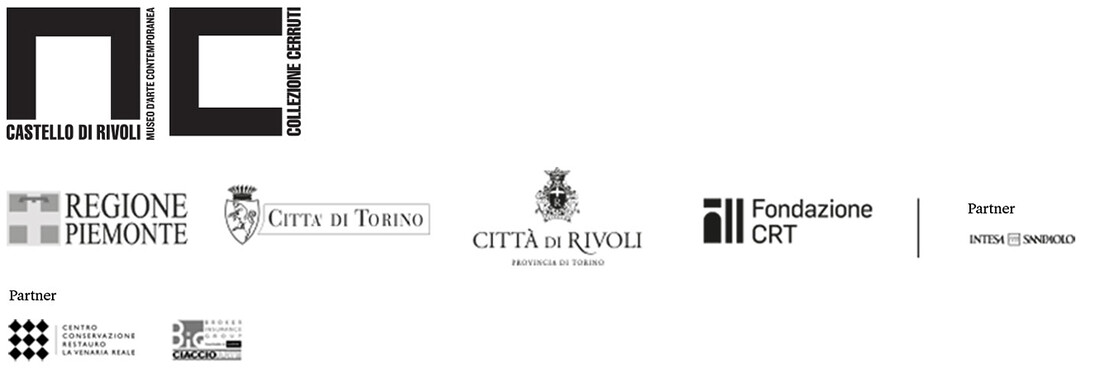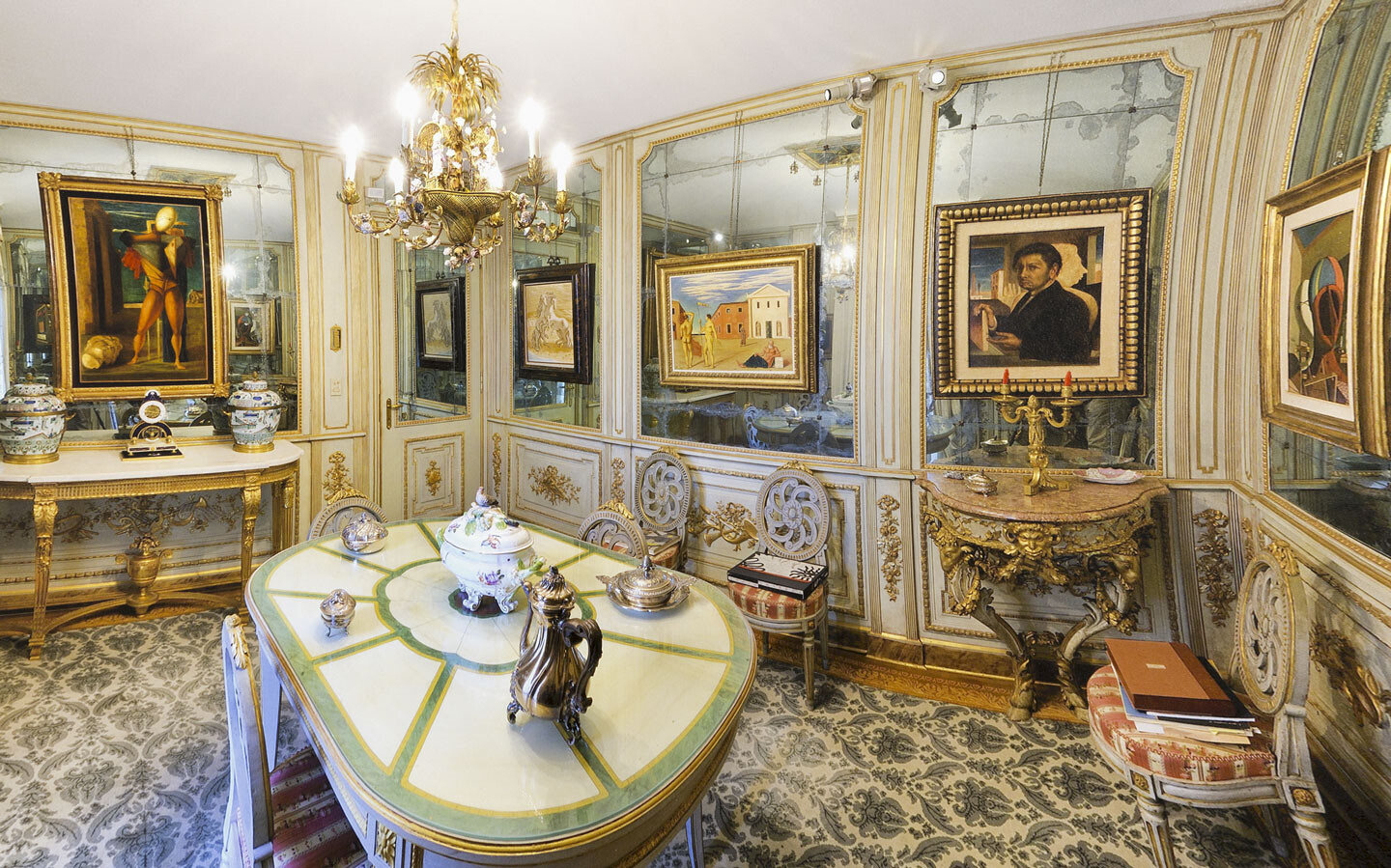May 12, 2019
Piazza Mafalda di Savoia
10098 Rivoli Turin
Italy
Hours: Wednesday–Friday 10am–5pm,
Saturday–Sunday 11am–6pm
T +39 011 956 5222
Miracles sometimes happen. The opening of the Cerruti Collection to the public within the framework of the Castello di Rivoli museum complex, is one.
From the late 1960s to 2014, the entrepreneur Francesco Federico Cerruti (Genoa, 1922–Turin, 2015) discretely built up a collection of works of art, books and furnishings of the highest quality with the painstaking care of a true connoisseur. There are some 300 works of painting and sculpture ranging from the medieval period to the contemporary era: from a 14th-century triptych by Agnolo Gaddi, to Francisco Goya’s The Disasters of War (1863); from Medardo Rosso’s The Jewish Child (1892), to Umberto Boccioni’s Antigrazioso (1912) and Giacomo Balla’s Velocità astratta (1913); from numerous paintings by Giorgio de Chirico, including the Metaphysical Muses (1918), to Amedeo Modigliani’s Woman in a Yellow Dress (1918); from important 20th-century Italian paintings of artists like Casorati, Sironi, Morandi and Carrà, to works by Picasso, Bacon, Burri, Fontana and Paolini. Parallel to the paintings and sculptures, Cerruti also created a collection of some 200 rare and finely bound volumes, including the Hypnerotomachia Poliphili (1499) of Francesco Colonna, once owned by the great bibliophile Jean Grolier, the Theatrum Orbis Terrarum (1601) of the Flemish cartographer Abrahamus Ortelius, and an edition of Albert Camus’ La Peste (1947) bound by Pierre-Lucien Martin in 1970. The approximately 300 items of furniture include important works by 18th-century Piedmontese cabinet makers like Pietro Piffetti and Giovanni Battista Galletti, precious carpets and a Steinway grand piano. There are even glasses once owned by the Tsar.
Francesco Federico started work at an early age in the Legatoria Industriale Torinese (LIT), founded by his father Giuseppe in 1925 and active from 1934 in the binding of Italy’s telephone directories. It was after the bombing of the factory on Corso San Maurizio, Turin, in 1943 that he decided to abandon university and devote himself entirely to the family firm. In 1953 the LIT was the first company in Italy to adopt the perfect binding process, whereby pages and cover are glued together at the spine rather than stitched. Three years later, the firm moved to Via Bellardi, and Cerruti settled in an apartment nearby, where he was to live for the rest of his life. A trip to explore new developments in the United States in 1957 led to the introduction of the latest binding machines into Italy. He invented a form of robotisation that made it possible to increase production to the point where the LIT is said to have turned out 200,000 bound volumes a day.
In 1961, Cerruti bought a site in Rivoli, behind the Manica Lunga of the Castello, which was still in ruins at the time, and started to build his villa in the Provençal style, which was completed in the late 1960s and then partially renovated in the second half of the 1980s. It was also in 1961, within the framework of celebrations for the centenary of Italian unification, that the Castello di Rivoli was included in a general program for the restoration of the most important monuments of the Piedmont region, but work to clean Filippo Juvarra’s unfinished atrium did not get under way until 1967. It was in 1984, when Cerruti’s collection was undergoing enormous expansion, that the Castello di Rivoli opened to the public as Italy’s first museum of contemporary art, thanks to a visionary architectural project by Andrea Bruno.
Cerruti’s growing passion for art gradually led him to live two very different lives at the same time, one as a successful industrialist and the other as a sophisticated collector intent on pondering the meaning of life through the great artworks to which he fondly referred as “his children.” The very first work in the collection was a small watercolour of 1918 by Kandinsky, probably purchased from an art gallery in Geneva around 1969. It was initially through Turinese galleries like La Bussola and Galatea, as well as the antique dealer Pietro Accorsi and at auctions, that Cerruti built up his collection, above all from the 1980s on. It was also in this period that he began to receive his friends twice a year in the villa, on 18 July, the feast of his patron Saint Frederick of Utrecht, and on 31 December, the evening before his birthday. Renoir’s Jeune fille aux roses (1897), bought in June 2014 at a Sotheby’s auction, was the last painting to enter the collection.
In the villa near the Castello di Rivoli, Cerruti created a trove, an ideal world of paintings, sculptures, furniture, carpets and rare editions arranged according to a precise iconographic concept. Surrounded by a garden laid out in different areas, each of which symbolises a particular relation with nature, the villa was used at weekends. It is said that Cerruti slept there only one night, but would have lunch alone on winter Sundays in a room on the first floor, where paintings by de Chirico hung on the mirrored walls all around him. In the summer he would sit on the veranda, in the midst of his Art Nouveau wickerwork furniture and his beloved orchids, looking onto the garden.
Renovation of the villa and gardens was carried out over the period 2016–18 to plans drawn up by the architectural firms Baietto Battiato Bianco and Con3Studio. The technological safety, security, fire-prevention and air-conditioning infrastructure was brought up to date with the highest international museum standards. The works were examined and catalogued, and any necessary conservation measures were initiated.
Through the agreement between the Fondazione Cerruti and Castello di Rivoli, the opening of the villa to the public offers an opportunity to discover exceptional works of art, along with the life, passions, intelligence and ideas of a figure in the world of contemporary art collecting, while also enabling artists and scholars to examine and draw inspiration from an extraordinary artistic heritage.
Most importantly, this event marks an incredible celebration and respect for the public sphere, which we hope to reinvigorate.
—Carolyn Christov-Bakargiev



